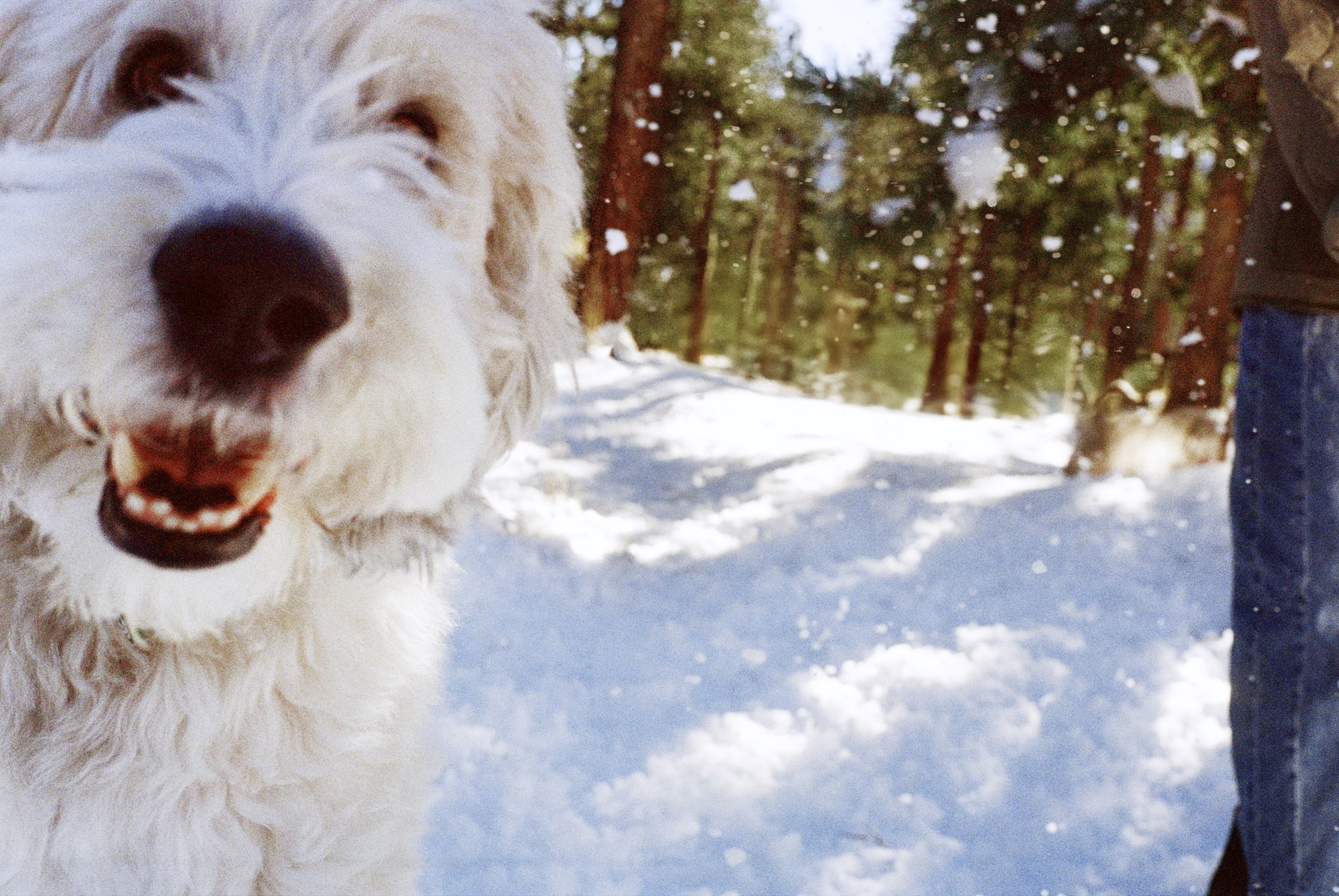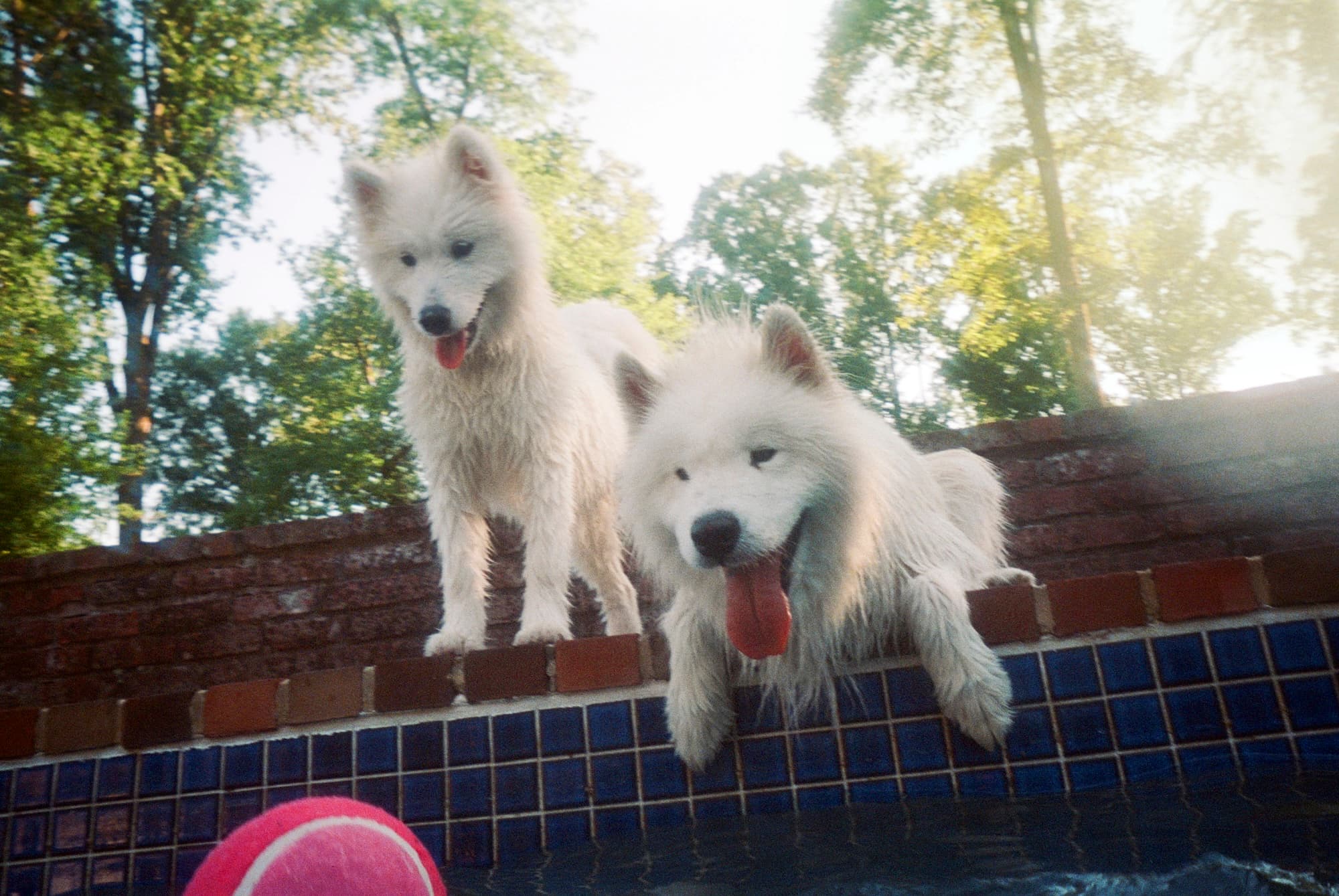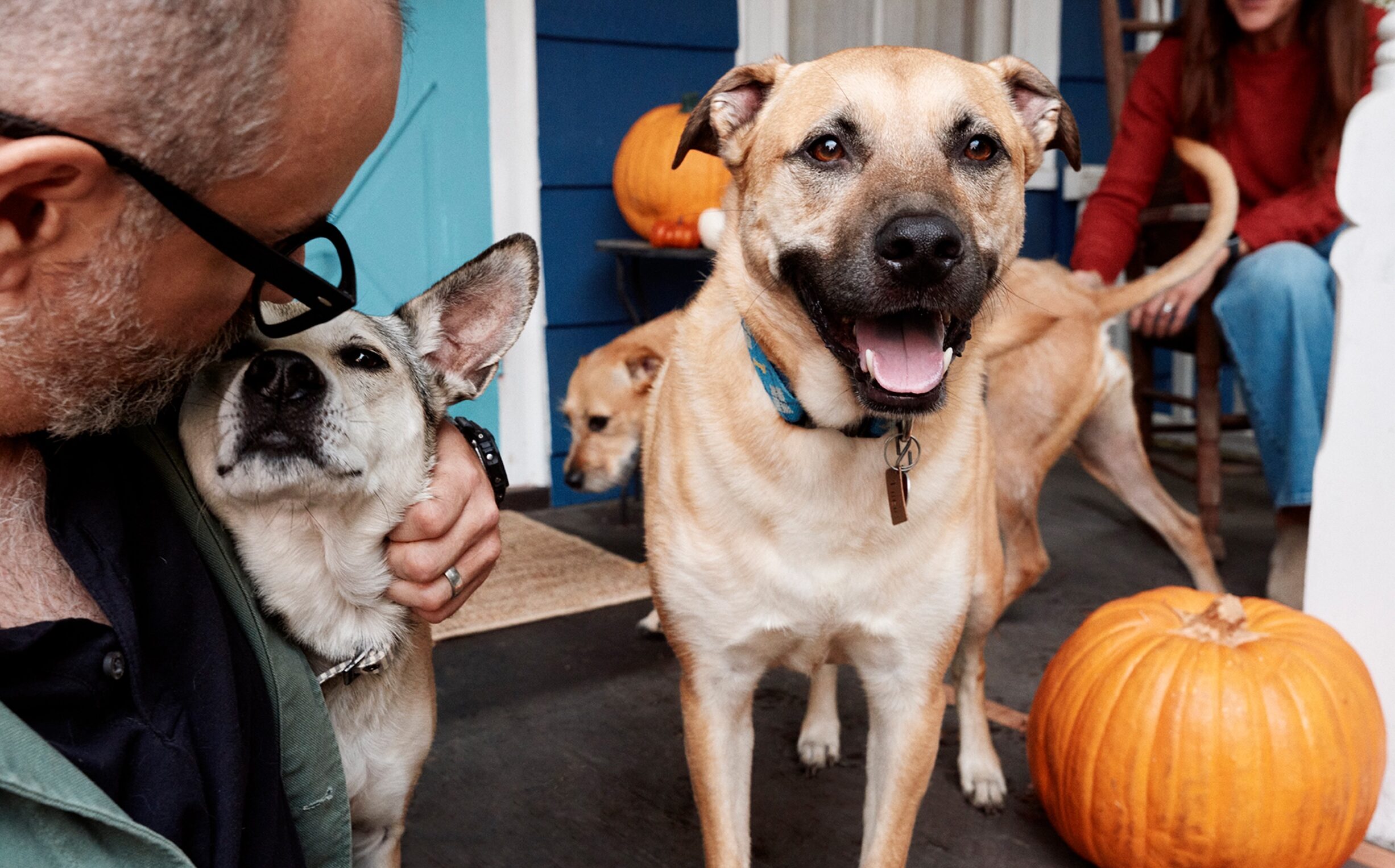
In this article:
- What do dogs see when they watch TV?
- What happened in this study?
- What research on dogs and TV is coming up next?
When golf is on TV, my colleague’s dog Rory stares at the screen. The 3-year-old poodle-cavalier mix plants her paws on the console. Her tail wags. She appears to be into the action, and reportedly prefers golf to other programming.
Rory—who is named not after reigning Masters champion Rory McIlroy, but TV character Rory Gilmore—has spent happy times on golf courses in real life, and is compelled by the sight of golf balls in the wild.
But can she tell what she’s looking at on television? When she sees a 2D image of the green, is she relating it to her experiences away from the entertainment center?
Dr. Jeffrey Katz, a psychology professor at Auburn University, believes the answer is “maybe.”
Dr. Katz, along with Dr. Sara Krichbaum and Lane Montgomery, recently researched dogs’ television viewing habits, and took some time to chat via Zoom about what they learned. We’ll share the big takeaways from our chat right after this.
It’s easier for dogs to watch TV than it used to be
Human viewers love the improved picture and sound quality of modern televisions, but the new technology represents a bigger leap for dogs.
The relevant change here has to do with televisions’ refresh rate—imagine the pages of a flip-book moving at a faster or slower speed. “You have to do it fast enough where it looks like there’s a continuous motion,” Dr. Katz says. “If you go too slowly, it flickers and doesn’t come together.”
Dogs’ vision differs from humans’. Dr. Katz says that people have a slower “flicker fusion rate” than dogs, meaning that a series of still images has to go faster to register as continuous for a dog. A refresh rate of 50 hertz appears continuous to humans. For dogs, that doesn’t happen until 75 hertz.

Old CRT (cathode-ray tube) TVs had a lower refresh rate than today’s flat-screens. Dr. Katz says they operated at around 60 hertz. So when a dog looked at a screen showing Lassie in the 1960s, it may have seemed like a flickering series of still images. But modern flat-screen TVs have refresh rates of up to 120 hertz. Because of this, dogs looking at television can now see what looks like motion.
As such, years ago, the results of research like this might have looked very different. But today’s dogs really can watch television along with their people.
The “Dog Television Viewing Scale”
This study’s authors asked 453 human respondents whose dogs watched television to respond to a “Dog Television Viewing Scale” (DTVS).
Survey questions concerned how frequently the dogs followed certain stimuli on the screen. These stimuli included dogs, other pets, non-pet animals, humans, and inanimate objects. The questions also asked about the ways dogs reacted to those stimuli—for example, by wagging their tails or barking. Other questions covered the ways dogs reacted to sounds coming from the TV, including noises from humans, pets, other animals, inanimate objects, and weather.
Dogs’ TV-watching habits vary by personality
In general, the researchers found that dogs were more likely to react to images of animals on television than images of other stimuli. This might not seem surprising, as dogs are often interested in animals they meet in the real world, too. But it does suggest that dogs had a sense of what they were looking at on the screen. This tracks with previous research in which dogs seemed to be able to tell the difference between 2D images of dogs and other animals.
Another general finding was that dogs were likely to respond to both sounds from the speakers and images on the screen.
But canine viewers’ behaviors toward the TV were not all the same. The study’s authors found that dogs who were more excitable were more likely to behave as if they perceived the images on TV as existing in the 3D world—by looking behind the TV set, for example. Fearful dogs were more likely to respond to non-animal stimuli from the TV, such as the sound of a doorbell.
What does this mean for a dog person deciding whether to leave the TV on for their best friend? Like many other aspects of dog care, it may come down to observing your dog, getting to know them, and doing more of what they like. If they’re upset by sounds and images from the TV, don’t leave it on. If they find it calming, keep doing it.
“We do know dogs like classical music,” Dr. Katz says, pointing to previous research. “It relaxes them; it soothes them.” The sound of The Price Is Right might not be quite the same as Rachmaninoff—but Dr. Katz’s attitude is that if it works for your dog, it works for your dog.
Coming up next
Dr. Katz is excited by the results of this study, but thinks there’s more to do. Armed with the knowledge from the DTVS, he’d like to design programming for dogs and observe how they interact with it while watching with their people.
Dr. Katz says that this dog-specific primetime programming would likely start with five- or ten-minute clips (“their attention span is short,” he explains), and focus on footage of dogs, cats, and other animals, as well as cars.
“Instead of relying on people’s observations,” he says, he’d like for human participants to record their dogs watching this custom programming so that researchers can “build an ethogram [a list of an organism’s behaviors] that actually characterizes these behaviors with the data—as opposed to relying on the person’s observations.”
Whether participating dogs will be as enthralled by this new dog-centric programming as Rory is by a drive sailing off a tee into a bright blue sky remains to be seen—but the returns so far suggest that, if you think your dog gets something out of watching television, you may well be right.




